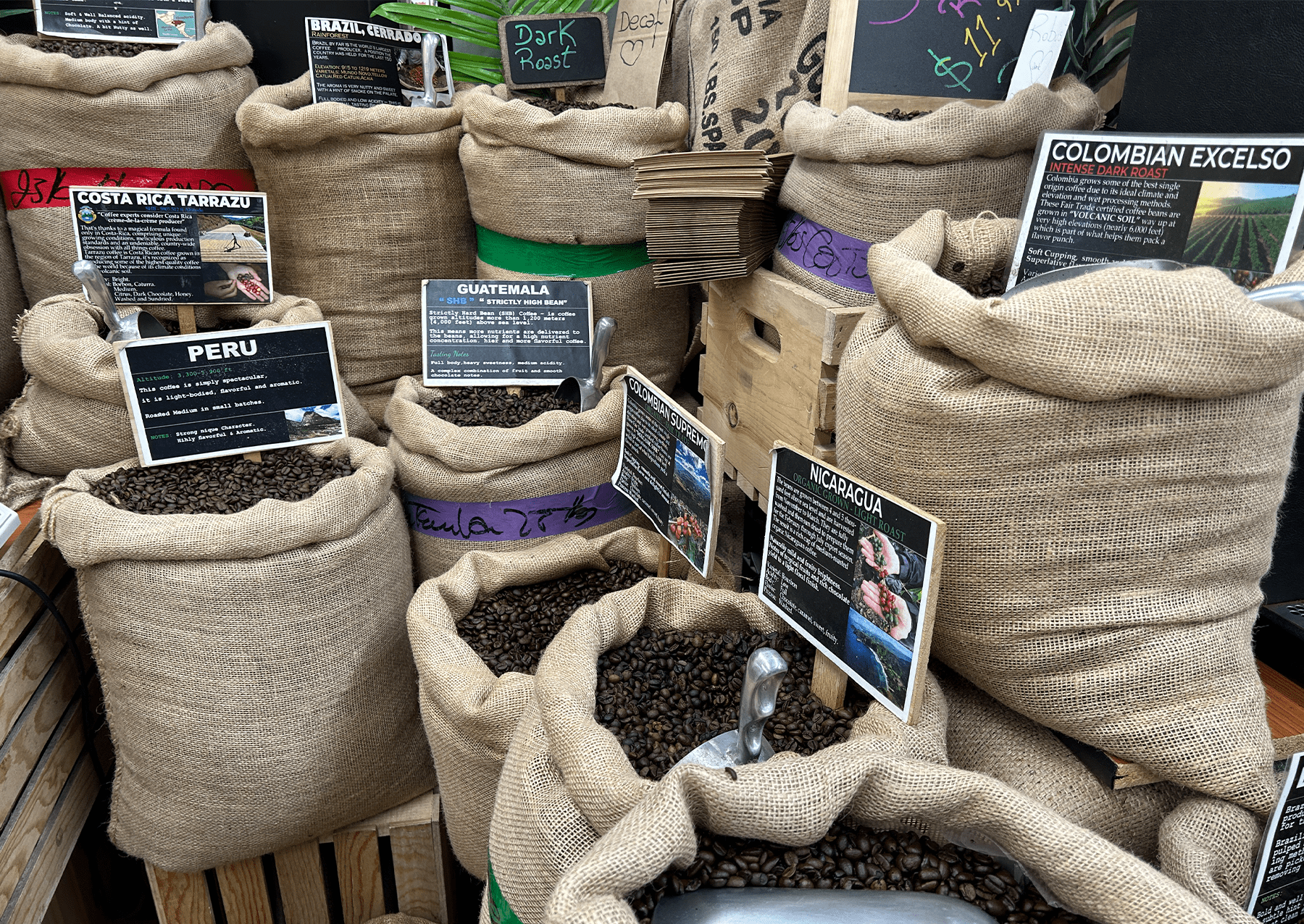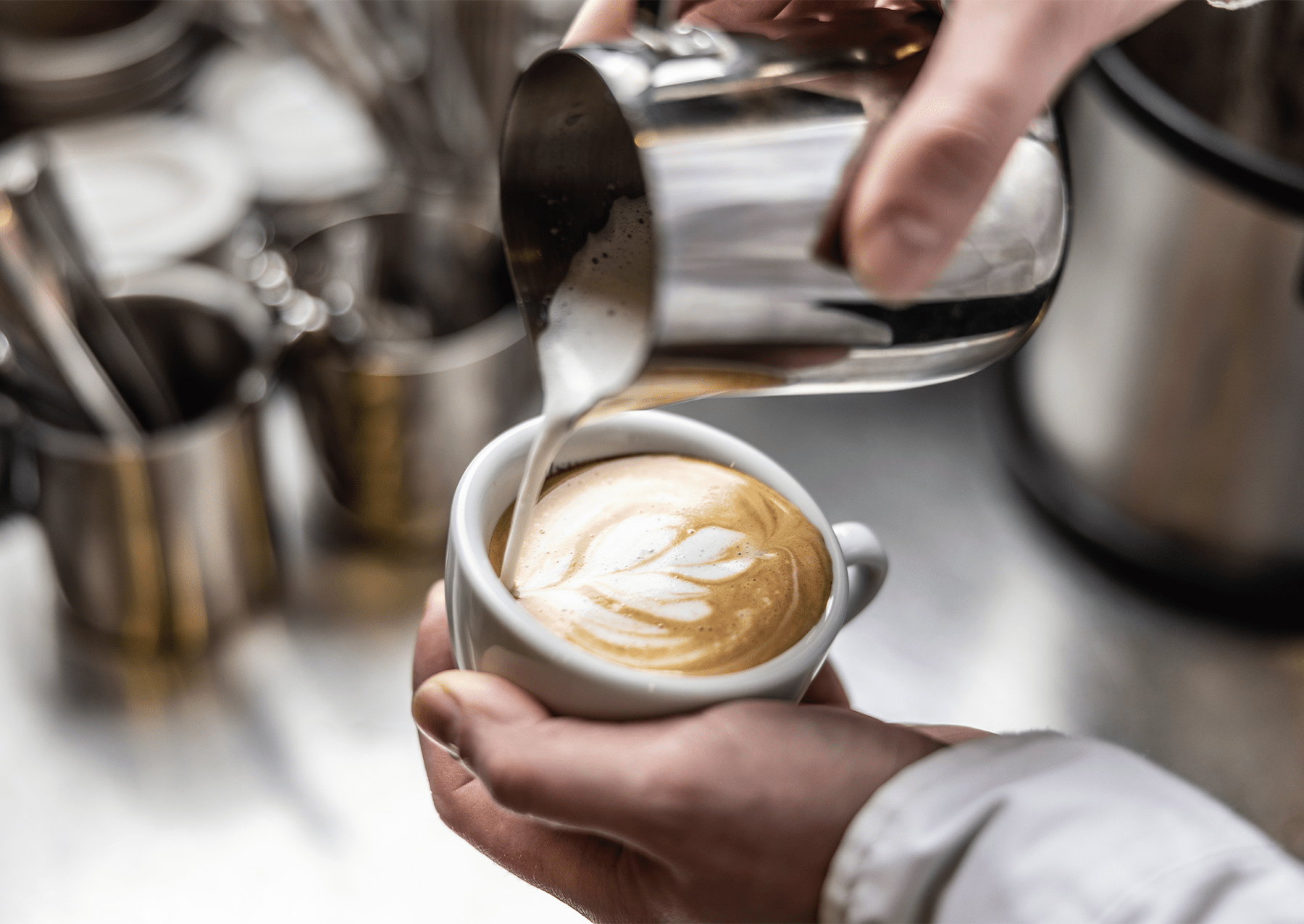Whether you’re an early bird or a night owl, coffee is probably part of your daily routine. Since 2004, the number of American adults who’ve enjoyed a daily cup of java has jumped up 37 percent, the highest level in more than 20 years, according to the National Coffee Association. But coffee is hardly a new invention. Its roots go all the way back to 850 CE , when coffee beans were first cultivated in the Arabian colony of Harar near present-day Ethiopia.
“From there, coffee was transported to Mecca and spread throughout the Arabian continent,” Bryan Quoc Le, food scientist and CEO at Mendocino Food Consulting, tells Popular Science. “But only in the 1600s did Venetian merchants record seeing a blackish beverage that resembled modern coffee, and brought coffee beans to Europe.”
Throughout this history, the way we grow, prepare, and serve coffee has changed. According to Samo Smrke, a research associate at Zurich University of Applied Sciences’ Coffee Excellence Center, there’s not a whole lot of other foods that receive the same level of processing as coffee–and every tiny step, from the soil it’s grown into to the temperature it’s boiled at has an impact on flavor.
Here’s a guide to the journey that a coffee bean takes to go from a simple root to your morning latte.
[ Related: The ‘experience’ of a cup of coffee may be just as stimulating as its caffeine. ]
Starting with seeds
A coffee plant hardly mimics the deep, rich brown that you’re used to seeing pour out of a french press. While in the ground, coffee is a lush, leafy plant with bright red berries. There are more than 130 types of coffee species out there, but only Arabica and Robusta end up in brews across the world, says Hannah Neuschwander, a senior advisor of communications at World Coffee Research.
Arabica beans originated in Ethiopia, but are now grown all over the world, especially in Brazil. Robusta is grown in Africa, Indonesia and India and is named for its hardy nature. The main taste difference between these two coffee species is that Arabica tends to taste lighter and fruitier, whereas Robusta makes for a rich, intense drink that is perfect for espresso.

But the beans themselves are just the beginning of the taste profile. “One thing that most coffee drinkers don’t totally understand is that what we call the bean is actually the seed that’s inside the fruit,” Neuschwander tells Popular Science.
When it comes to harvesting and processing coffee, the ripeness of that fruit really matters for taste. That’s because the fruit itself, even when removed from the coffee bean, leaves an imprint on taste and aroma. There’s a few ways to get the fruit off of the seed, or processing the coffee, that eventually becomes a coffee bean. Stripping or grinding the fruit off completely leads to a more perceived acidic taste, says Smrke. Additionally, a washed process, which leaves a bit of the fruit on the seed to ferment, will end up with a fruitier taste in your cup.
Time to roast
Once you’ve got a processed bean, there’s still quite a ways to go before that bean even smells like anything close to a cup of joe. These beans, also called “green” beans, have the precursors to those delicious java scents, says Smrke. However, the compounds need to go through a wake-up process called roasting. During roasting, there’s a few processes happening to the beans. The most important of which is the Maillard reaction–a chemical reaction of sugars with amino acids gives coffee its distinctive, roasty smell, says Smrke.
Roasting, in terms of flavor, can be looked at as a battle between two different taste characteristics: acidity and bitterness. The more you roast a coffee bean, the more the acidic compounds will break down. This means if you are a fan of a more acidic brew, you’ll want to stick with a lighter roast. Bitterness comes out more with roasting. So with a darker roast, you’ll experience more of that classic coffee bitter taste. However, there is a caveat in this flavor battle–origin taste, or the distinctive tastes that come from the process long before the roaster, tend to go away with a heavier roast.
[ Related: Scientists figured out the optimal cup of coffee. ]
“Seemingly minor, changes in the roast profile have a big impact on the final flavor in the cup,” William Ristenpart, director of the University of California, Davis Coffee Center, tells Popular Science.
Once coffee beans are roasted, it’s best to give them a little break before diving straight into preparation. This is because freshly roasted beans contain a lot of carbon dioxide, says Smrke, which means extracting it will be a foamy struggle. Dark roasts tend to need a break of around a month to six weeks before moving on to the next step, but that timeline is shorter for lighter roasts.

Preparing coffee
Just as there are seemingly countless ways to make a coffee bean unique, the same can be said for preparing a cup of coffee. Generally speaking, a coarser ground coffee is perfect for a french press or a cold brew. As you venture towards a stovetop moka pot, espresso machine, or even Turkish coffee, that’s when a finely ground coffee is essential for the tastiest results.
The type of coffee, and its age, also plays a role in how to best grind it down. But, to keep things simple, let’s start with the ever-popular espresso. For brewing espresso, a lighter roast will need to be ground finer than a darker roast coffee, according to Smrke. And the fresher your espresso beans are, the coarser they need to be ground. A coarser grind helps balance out the frothiness of crema–the fine level of froth on the top of an espresso.
“When the coffee ages, the carbon dioxide is lost,” he says. “This carbon dioxide is creating crema during the extraction of espresso, the crema impacts how much resistance you have or how easily it flows.”

Water temperature also matters, says Kristine Nolin, chemistry professor at the University of Richmond. Nolin argues for brewing coffee at a slightly-less-than-boiling 205 degrees Fahrenheit for perfect extraction.
“At higher temperatures, the amount of bitter flavor will increase due to more of the flavor molecules being rapidly extracted,” she tells Popular Science. “Overboiling the water prior to brewing your coffee will lead to deoxygenation of the coffee, which also causes a bitter flavor.”
But for baristas and amateurs alike, the real way to get to know your perfect brew is to play around with different beans, roasts, equipment, and techniques. Whether it’s bitter or acidic, carmelized or smokey, hot or cold brewed, there’s a near infinite number of ways to make yourself a cup of coffee that will both caffeinate and delight.






